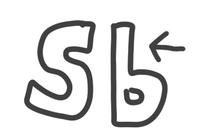Shapenote singing ︎ ︎︎ ︎
This
section is
under construction.........
︎︎ ︎︎
︎︎︎︎︎︎︎︎︎︎︎︎︎︎
︎︎︎︎︎︎ ︎
︎︎︎ ︎
︎︎ ︎
︎︎ ︎
︎︎ ︎
︎︎ ︎
︎︎ ︎
︎︎ ︎
︎︎︎︎︎︎ ︎
︎︎︎︎︎︎
︎︎︎︎︎︎
Shapenote music
Some come across as stern, as though keeping a potentially unruly class in order. Some look overcome by the joy of that moment, as though struck by an insight into how incredibly beautiful this collective act is. Some move dance-like around the square, directing the energy of the song to the different sides of the square, from bass to tenor to alto to treble, as they come in and out of the overall song.
Watch the videos I made of the 2024 Berlin All-Day Singing:
Saturday Shenandoah Harmony All-Day Singing

Sunday Sacred Harp All-Day Singing

My shape-note background story
I moved to Berlin, Germany in June and was at some point after that browsed through some music compilations I had made for friends in about 2009 (my most full-on music-nerd phase). Two of the songs on these compilations stood out sharply, Antioch 277 and The Child of Grace 77T, from a collection called I Belong To This Band, released by the Dust to Digital record label. The collection was a sample of recordings spanning 85 years of the Sacred Harp American traditional singing practice.
I remember my younger self being thrilled by the rawness of the sound of these recordings, and listening to them a lot, but I didn’t get round to looking into this traditional singing practice. It was a powerful, raw, collective sound and I loved it. That’s all that mattered to me at the time.
Come October 2024, fifteen years later, upon listening to these two songs that I had luckily included in my archive of past musical tastes, I was thrilled again, but this time wanted more. I hoped to find guitar tabs and lyrics for Antioch 277 and quickly found what appeared to be the ultimate home page of all things Sacred Harp music, the (infamous) Bremen Sacred Harp website.

Somebody (Harald Grundner) had collected and neatly organized every single one of the 554 songs contained in the book. Every song had a page with the full sheet-music and lyrics, accompanied by a mini embedded audio player with robo-voices singing each of the songs parts. Underneath the mini audio player were a handful of links to Youtube videos of groups of singers around the world singing each of these songs.
I immediately Googled ‘sacred harp berlin’ and found the details for my local group. A few days later, a friend and I went to our first singing, and struggled to keep up as each singer took a turn to call out a page number from the book. When it was my turn to choose a song, I asked them if we could sing Antioch 277 and they happily obliged.
All-Day Singings / Conventions
I’ve been singing with the Berlin group for just over a year at this point and have attended five all day singings. It’s not obvious when you go to your first local singings, but the annual all-day singings and conventions are an experience that nothing can prepare you for. Singers travel from across the country, continent or even globe to gather to sing their favourite songs together.
No time is wasted between songs, there is no applause and hardly a moment to consider how moved you were by the song before, before another page number is called out, books are rapidly paged through and a piping tone emerges from one individual who sets the key, then dozens of voices simultaneously add their voices, agreeing with the chosen pitch.
Everyone present is allowed a turn to choose a song, and moves to the center of the square to lead the song (the 4 sides of the square being bass, tenor, alto and treble). Newer singers typically stand somewhat motionless in the middle, trying their best to beating their arm up and down in a steady tempo to signal to the crowd the pace that they want the song to follow. Some might have a deer-in-the-headlights expression as they look out at the others, but most seem to keep their gaze locked onto the page in the book they hold, trying their best to follow along with the song that they are just barely leading.
More experienced singers have much more freedom in how they lead the song, as they have learned to keep the beat without thinking, and maybe even know the lyrics by heart. You might not expect from your interactions outside of the singing square, how a singer carries themselves in this central, expressive role.
Some come across as stern, as though keeping a potentially unruly class in order.
Some look overcome by the joy of that moment, as though struck by an insight into how incredibly beautiful this collective act is.
Some move dance-like around the square, directing the energy of the song to the different sides of the square, from bass to tenor to alto to treble, as they come in and out of the overall song.
No matter how each singer leads a song, they very visibly reveal some part of themselves and their connection to that song. Each singer expresses wonderfully unique as they lead. And the same is true of everyone singing from their chair, though to a much less visible degree.
This isn’t something that I had noticed until I filmed and edited these videos of the 2024 Berlin All-Day Singing. I hope that you are inspired by the performances here, even though this singing practice is not one of performing for spectators. I even hope that you are inspired enough to consider if you might enjoy taking part in a practice like this. If so, you would be more than welcome.
Find out if there is a local group singing in your city here:
Continental Europe, United Kingdom, Ireland, Japan, Australia
and
USA











